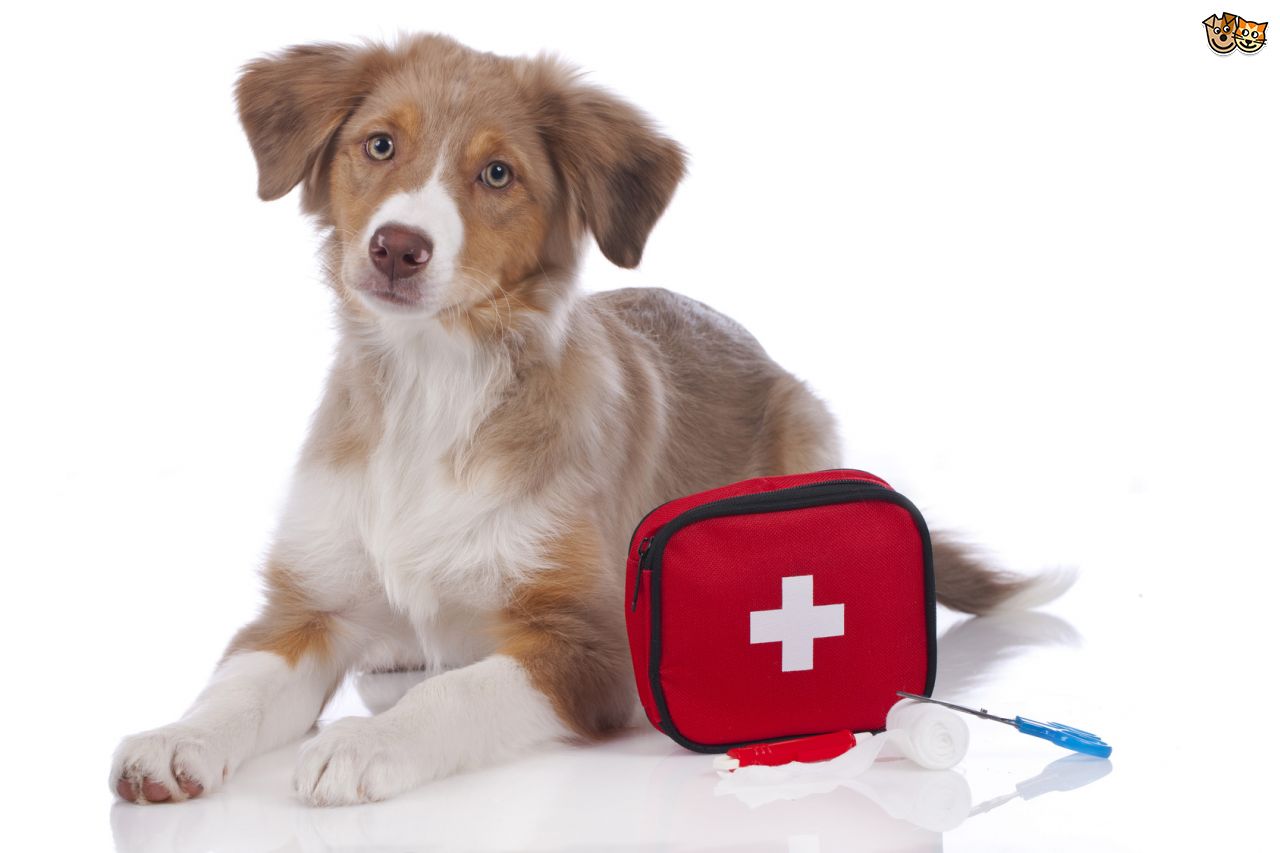BEST TIPS for PET FIRST AID :))))) part 1
Emergency treatment and first aid for pets should never be used as a substitute for veterinary care. But it may save your pet's life before you can get your pet to a veterinarian.
View our Pet First Aid brochure
Poisoning and Exposure to Toxins
Pet poison hazards
Poisoning is a pet emergency that causes a great deal of confusion for pet owners. In general, any products that are harmful for people are also harmful for pets. Examples include cleaning products, rodent poisons and antifreeze. But you also need to be aware of common food items that may be harmful to your pet. The AVMA brochure Household Hazards offers a summary of what foods and common household items may pose a danger to your pet. Additional information and examples can be found on the other Web sites listed in this section.
If your pet's skin or eyes are exposed to a toxic product (such as many cleaning products), check the product label for the instructions for people exposed to the product; if the label instructs you to wash your hands with soap and water if you're exposed, then wash your pet's skin with soap and water (don't get any into its eyes, mouth or nose). If the label tells you to flush the skin or eyes with water, do this for your pet as soon as possible (if you can do it safely), and call a veterinarian immediately.
If you know your pet has consumed something that may be harmful, or if the animal is having seizures, losing consciousness, is unconscious or is having difficulty breathing, telephone your veterinarian, emergency veterinary clinic or the Animal Poison Control Center hotline (888.426.4435 – available 365 days/year, 24 hours/day) immediately. There is a fee for the consultation.
If possible, have the following information available:
Species, breed, age, sex, weight and number of animals involved
Symptoms
Name/description of the substance that is in question; the amount the animal was exposed to; and the length of time of the exposure (how long it's been since your pet ate it or was exposed to it).
Have the product container/packaging available for reference.
Collect any material your pet may have vomited or chewed, and place it in a plastic sealable bag to take with you when you bring your animal in for veterinary treatment.
Additional Information on Animal Poisoning:
The American Society for the Prevention of Cruelty to Animals (ASPCA) offers additional information and resources:
Animal Poison Control Center
Another resource is Killer Grapes and Other Concerns in Animal Poison Control, available on the University of Illinois College of Veterinary Medicine's Web site.
Seizures
Keep your pet away from any objects (including furniture) that might hurt it. Do not try to restrain the pet.
Time the seizure (they usually last 2-3 minutes).
After the seizure has stopped, keep your pet as warm and quiet as possible and contact your veterinarian.
Fractures
Muzzle your pet.
Gently lay your pet on a flat surface for support.
While transporting your injured pet to a veterinarian, use a stretcher (you can use a board or other firm surface as a stretcher, or use a throw rug or blanket as a sling). If possible, secure the pet to the stretcher (make sure you don't put pressure on the injured area or the animal's chest) for transport—this may be as simple as wrapping a blanket around them.
You can attempt to set the fracture with a homemade splint, but remember that a badly-placed splint may cause more harm than good. If in doubt, it is always best to leave the bandaging and splinting to a veterinarian.
Bleeding (external)
Applying bandage to stop external bleeding
Muzzle your pet.
Press a clean, thick gauze pad over the wound, and keep pressure over the wound with your hand until the blood starts clotting. This will often take several minutes for the clot to be strong enough to stop the bleeding. Instead of checking it every few seconds to see if it has clotted, hold pressure on it for a minimum of 3 minutes and then check it.
If bleeding is severe and on the legs, apply a tourniquet (using an elastic band or gauze) between the wound and the body, and apply a bandage and pressure over the wound. Loosen the tourniquet for 20 seconds every 15-20 minutes. Severe bleeding can quickly be life-threatening—get your animal to a veterinarian immediately if this occurs.
Bleeding (internal)
Symptoms: bleeding from nose, mouth, rectum, coughing up blood, blood in urine, pale gums, collapse, weak and rapid pulse.
Keep animal as warm and quiet as possible and transport immediately to a veterinarian.
Burns
Chemical
Muzzle the animal.
Flush burn immediately with large quantities of water.
Severe
Muzzle the animal.
Quickly apply ice water compress to burned area.
Choking
Inspect oral cavity in choking emergencies
Symptoms: difficulty breathing, excessive pawing at the mouth, choking sounds when breathing or coughing, blue-tinged lips/tongue.
Use caution – a choking pet is more likely to bite in its panic.
If the pet can still breathe, keep it calm and get it to a veterinarian.
Look into the pet's mouth to see if a foreign object is visible. If you see an object, gently try to remove it with pliers or tweezers, but be careful not to push the object further down the throat. Don't spend a lot of time trying to remove it if it's not easy to reach—don't delay, and get your pet to a veterinarian immediately.
If you can't remove the object or your pet collapses, place both hands on the side of your pet's rib cage and apply firm quick pressure, or lay your pet on its side and strike the rib cage firmly with the palm of your hand 3-4 times. The idea behind this is to sharply push air out of their lungs and push the object out from behind. Keep repeating this until the object is dislodged or until you arrive at the veterinarian's office.
Heatstroke
Never leave your pet in the car on warm days. The temperature inside a car can rise very quickly to dangerous levels, even on milder days. Pets can succumb to heatstroke very easily and must be treated very quickly to give them the best chance of survival.
If you cannot immediately get your pet to a veterinarian, move it to a shaded area and out of direct sunlight.
Place a cool or cold, wet towel around its neck and head (do not cover your pet's eyes, nose or mouth).
Remove the towel, wring it out, and rewet it and rewrap it every few minutes as you cool the animal.
Pour or use a hose to keep water running over the animal's body (especially the abdomen and between the hind legs), and use your hands to massage its legs and sweep the water away as it absorbs the body heat.
Transport the pet to a veterinarian as soon as possible.
www.avma.org